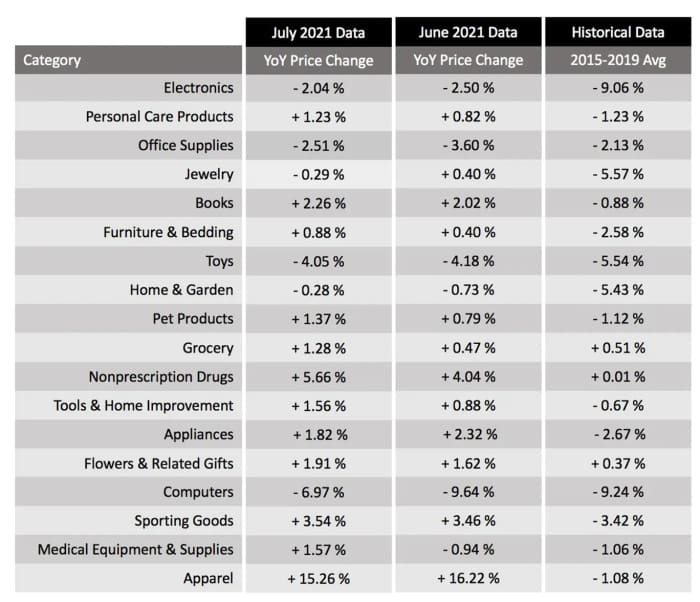This post was originally published on this site
Shoppers moved online in droves during the pandemic — and online prices moved upwards.
“The COVID-19 pandemic reversed a predictable pattern in e-commerce, where consumers were generally able to purchase goods cheaper online. This reversal was the result of surging demand, supply chain constraints, and growth in categories that had more durable prices,” according to the latest report from the Adobe Digital Economy Index, released Thursday.
“In recent months, online inflation continues to rise,” the Adobe
ADBE,
report said. “And while these price increases aren’t as steep as those offline, the upward trend shows no signs of slowing down.”
Online prices were up 3.1% on the year in July, while monthly price changes — traditionally more volatile — were down 0.7%. That compares to a rise of 2.3% on the year and an increase of 0.6% in the month in June.
“
‘We expect online inflation will continue to rise and be in closer sync with offline prices.’
”
This marks a stark turnaround in online price trends in recent years. From 2015 to 2019, for instance, online prices fell by 3.9% on average annually. To put those figures in context, the consumer price index, which captures offline prices, rose 5.4% on the year and 0.5% on the month in July. Traditionally, online prices have trended downward, while CPI has trended upwards.
Online prices for personal care products fell 1.2% on the year on average between 2015 and 2019 before the coronavirus pandemic, but rose by 1.2% on the year in July 2021. Clothing prices rose over 15.2% on the year in July compared to a more than 1% fall from 2015 to 2019. And prices for non-prescription drugs surged 5.66% in July, yet only increased by 0.01% on average between 2015 and 2019.

“With a hot real-estate market and consumers spending more time at home, online inflation in categories including furniture/bedding, home/garden, tools/home improvement, and appliances have sustained,” Adobe said. “The pandemic induced a shift in consumer behavior, with more people now comfortable ordering couches, gardening tools, and more online.”
Vivek Pandya, lead analyst at Adobe Digital Insights, said, “As the digital economy expands, online pricing trends will have greater impact on how we measure and understand inflation overall. Consider that in just the first seven months of 2021, consumers have already spent over $481 billion dollars online, a staggering 61 percent increase over the same period in 2019.”
The Adobe Digital Economy index measures 1 trillion visits to retail sites and over 100 million stock keeping units in 18 product categories. “With online shopping becoming more ubiquitous, and consumers getting more accustomed to ordering everyday staples through e-commerce, we expect online inflation will continue to rise and be in closer sync with offline prices,” Pandya said.





